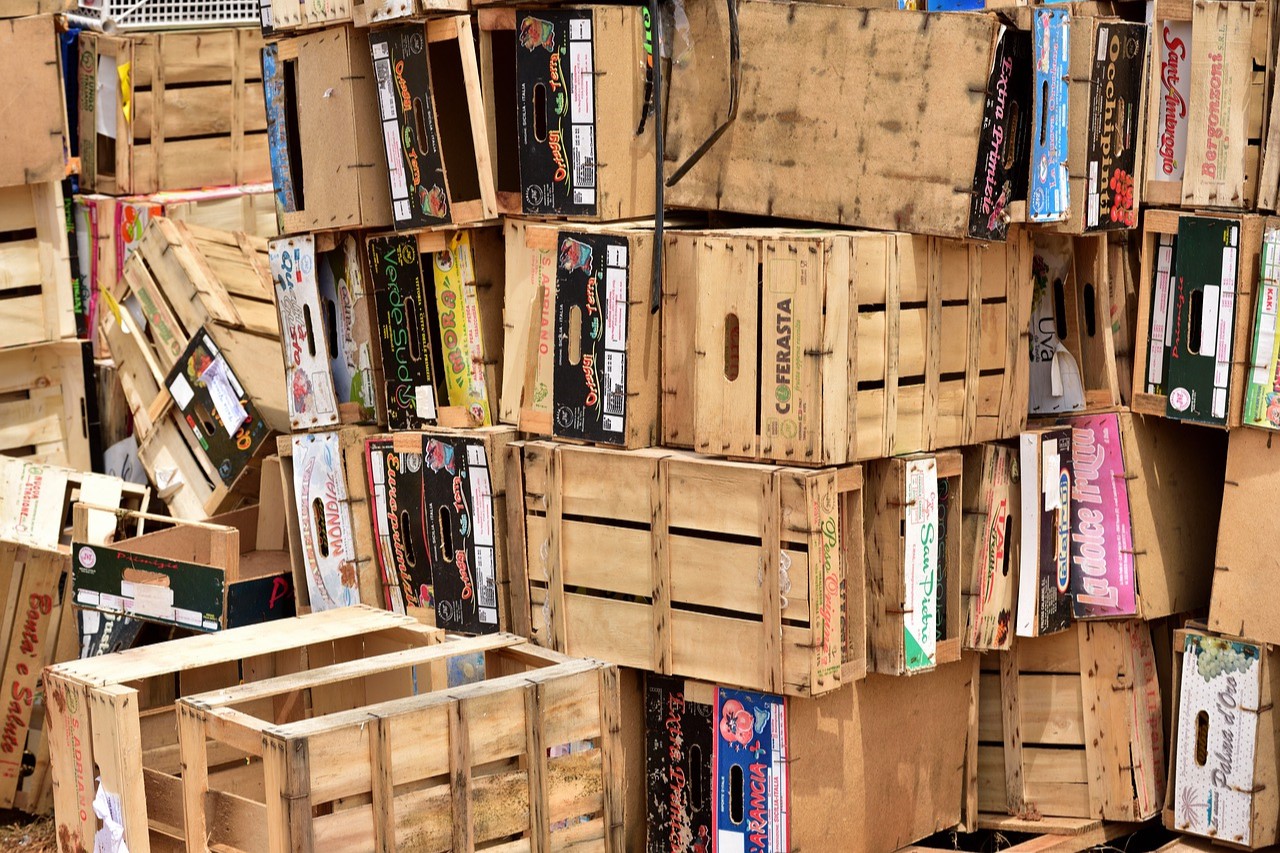
The tenet “big things come in small packages” really doesn’t apply to the global commercial world we occupy today, try telling that to someone who ordered a Nissan from Amazon if you like, yes! that happened. What we can safely assume is that all things come in packages, our thoughts are packed away in our minds and then transported through time in books, our memories in photos and so on; if the primeval instinct is to survive, then surely the one after that is to preserve. Storing away things safely for future use is what has enabled humanity to survive and packing valuable items for later use is what made it thrive by way of trade and commerce.
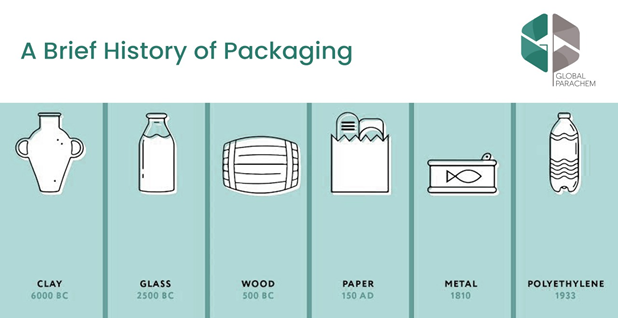
Early Days
When people first used clay pots to preserve their food, the history of packing was just getting started. The Romans created parchment, a paper manufactured from animal skins, and the Egyptians created papyrus, a reed-based paper.
The history of packaging began with the need to store and transport food and water as means of survival for early tribes and societies, but it doesn’t end there. Packaging is also a means to display the value of a product where its inner ideas are often displayed on the packaging that contains it. Packaging has also been a language, a language of easily recognisable signs and symbols that people understand irrespective of their native language. The earliest forms of packaging involved the use of vines, leaves, animal skins, hides and bones to invent the first product containers known to us. The choice of packaging held varying symbolic meaning for the tribe, a way of storing their beliefs and accomplishments. Packaging materials were used for special occasions and common occasions alike as they were by higher classes and commoners;, they were another means of distinguishing social classes, much hasn’t changed since then. Artefacts from Ancient Egypt and the Indus Valley Civilisation reveal the social positions of their respective owners; historical status symbols as it were. These containers became culture, especially in Ancient Egypt where glass was expensive, regarded a precious stone and usually made for royalty. This trend became an obsession with common folk as well, leading to the discovery of glass blowing technology with which glass could be moulded into containers for storage. Did you know that glass back in the those days wasn’t transparent, it was black. Transparent glass would take another five hundred years before coming into use.
China and Paper Packaging
The credit for inventing flexible packaging must go to China, their innovations in developing paper from hemp around the second century is the oldest example of flexible packaging. Funny how hemp has made a major comeback by way of sustainable packaging material all these years later.
Historians suggest that during the first and second centuries, China began to use treated mulberry bark for wrapping food items and in a matter of centuries, the Chinese perfected their paper-making techniques, and began using the material for packaging items like crockery, medicine, wine and tea parcels.
With the passing of another few centuries, in the Medieval Ages, packaging evolved to store and transport bigger quantities in the form of wooden barrels and boxes for transport across long trade routes. As seafaring became more popular, barrels came in vogue for comforting brave travellers who set out to cross vast perilous unknown oceans, by storing items such as rum, aged and preserved food, and most importantly: fresh water.
The Industrial Revolution
The Industrial Revolution (1760-1840) gave rise to quite a few technological advancements in packaging with a sudden increase in demand for better quality products, fuelled by a surge in mass consumption. Some of the most profoundly impactful packaging products in history were invented in this age. Nicolas Appert invented a method to preserve food for longer periods
of time by boiling and sealing it in glass containers, for which he was rewarded 12,000 francs by none other than Napoleon himself. Tin cans were invented in England in 1810 by Peter Durand and cardboard boxes followed in 1817 thanks to Malcolm Thornhill.
19th and 20th Century Innovations
Paper bags were created for commercial use in 1844 and in 1852 Francis Wolle invented a machine that could mass-produce paper bags
In 1879, a Brooklyn printer developed the first carton by accident! Kellogg’s became the first company to use cardboard boxes for marketing and selling their cereal in 1906. Perhaps the most important packaging product of the 1960s and 70s; cellophane was invented by Swiss chemist Jacques E. Brandenberger as a “cloth” that wouldn’t consume liquids. Cellophane also lead to the birth of plastic packaging later on.
Bubble wrap, everyone’s favourite wrap that pops with every squeeze, was made accidentally in an attempt to create a new kind of wallpaper, by sealing two shower curtains that would make air bubbles in 1957 and in 1960 IBM began using bubble wrap to package all their computers and fragile products.
Polyethylene Terephthalate or PET bottles came about in 1973 for containing carbonated drinks but they soon became the preferred material for manufacturers who wanted cheaper alternatives. Polyethylene was invented almost forty years before PET bottles.
Packaging Presently
Today, the packaging industry is enabling and supporting innovators to create new ways for reducing the industry’s impact on the environment. Sustainable packaging innovations like biodegradable and edible packaging including paper mailer bags or paper courier bags, tamper proof bags demonstrate a growing conscientiousness in society alongside the packaging industry’s willingness to adapt and improve, keeping in line with what is best for a better, collective future. Yet, more is needed by way of legislative and executive support from governments and international organisations for quicker and more meaningful change. Much like the great changes packaging has seen over the course of two and a half thousand years.

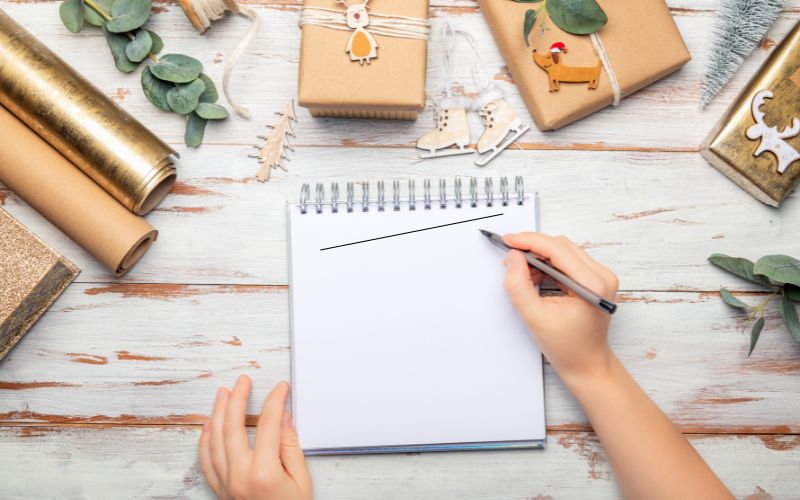
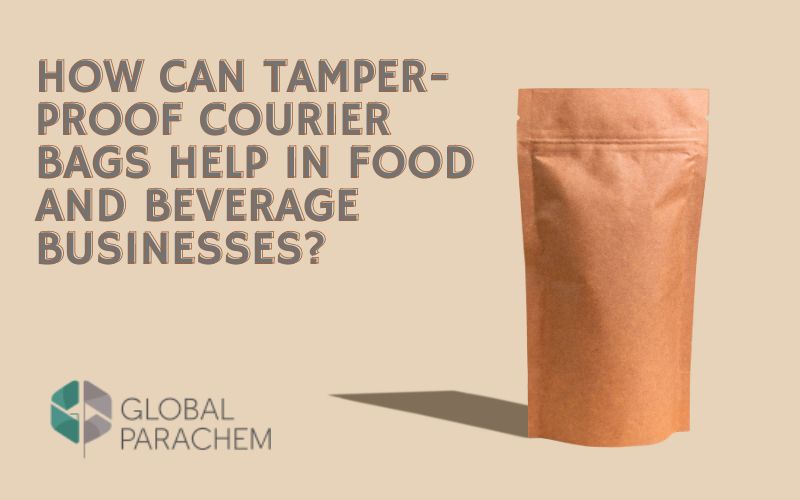
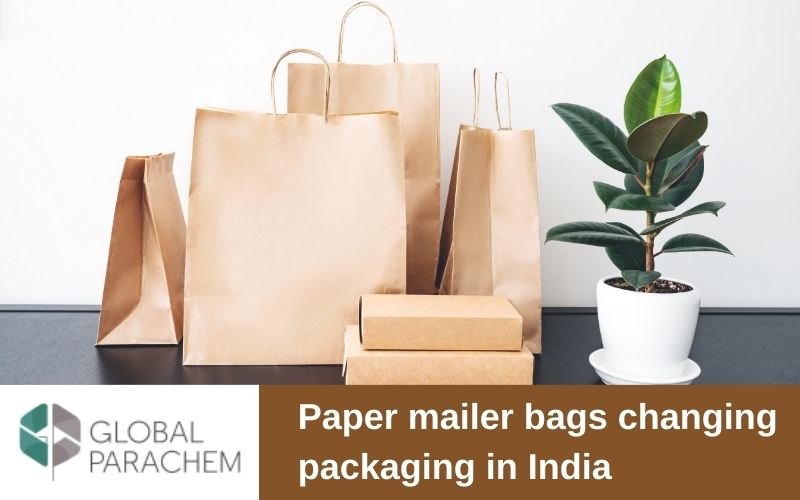
Leave a comment